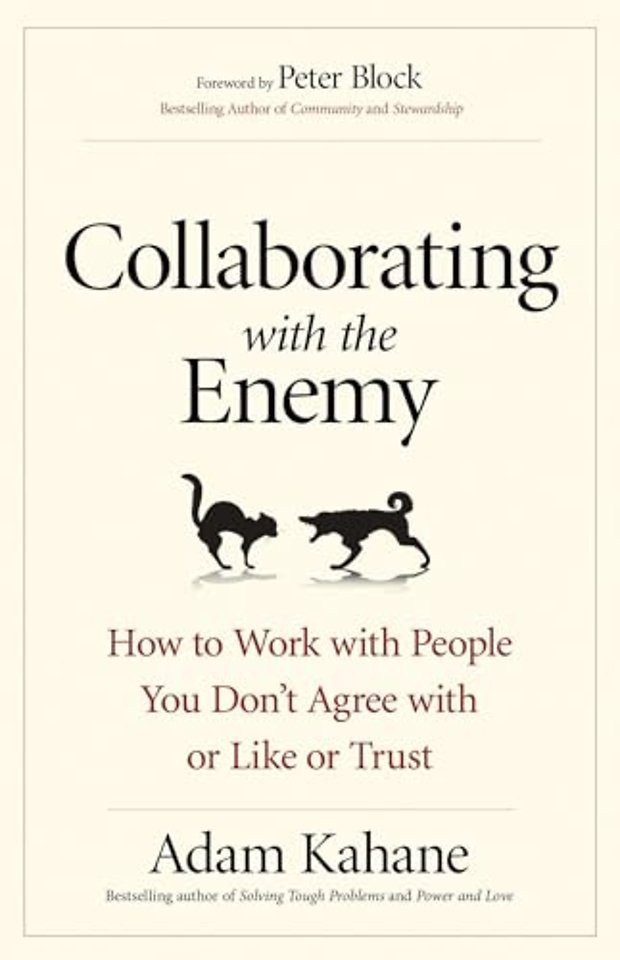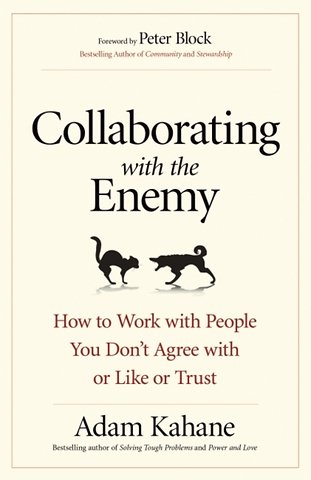
Lees verder



Adam Kahane werkt over de hele wereld aan economische ontwikkeling, voedselveiligheid, zorg, klimaatverandering, rechtshervorming en vredestichting, en dat in diverse teams van leiders - directeuren en politici, generaals en guerrillastrijders, activisten en overheidspersoneel, clerus en artiesten.
Meer over Adam KahaneAs our societies have become more complex and globalized and our organizations flatter and less hierarchical, more of us need to collaborate across more organizations, geographies, and cultures than ever before. But this increases the chances that we're going to get stuck having to collaborate with people we don't agree with or like or trust. But we've got no choice.
We have to learn to work with people we might actually have come to think of as "the enemy." International consultant Adam Kahane, who has worked in some very fraught contexts in his career (South Africa after apartheid, Guatemala after a civil war), has found that in these low-control, high-conflict situations, everything we think we know about what makes collaboration work is wrong. The neat black-and-white thinking that underlies conventional collaboration-us/them, harmony/conflict, problem/solution-won't work. You need to be more flexible, accept a level of uncertainty and improvisation, and practice what Kahane calls "stretch collaboration." In this very timely book he takes on five misunderstandings that keep us from effectively collaborating with "those people" and tells us what we should do instead.
samenwerken conflict stretch collaboration verandering communicatie verschillen experimenteren teamdynamiek probleemoplossen vertrouwen zelfsturing macht complexiteit loslaten van controle organisatieverandering persoonlijke ontwikkeling leiderschap harmonie versus conflict faciliteren onzekerheid flexibiliteit dialoog polarisatie teams verandermanagement creatieve spanning systeemdenken besluitvorming collectieve intelligentie

U kunt van deze inhoudsopgave een PDF downloaden
Heb je jouw boeken niet meer nodig?
Als je jouw studieboeken gekocht hebt bij hanzestudybook.nl, kun je geselecteerde titels moeiteloos terugverkopen aan Noordhoff. Geen vragen, geen gedoe en lekker duurzaam.
Een AI-book is niet een boek dat geschreven is door AI maar een boek dat verrijkt is met AI. Het maakt de inhoud van een boek interactief via WhatsApp, zodat je ermee kunt chatten. Zie het als een razend slimme assistent die het boek perfect begrijpt en er alles uit onthouden heeft. Jij kunt deze assistent alles vragen. Vraag bijvoorbeeld hoe je iets kunt toepassen op jouw persoonlijke situatie, om een korte samenvatting, of wat de belangrijkste inzichten zijn. AI-books zijn alleen te gebruiken via WhatsApp, je hoeft er geen aparte app voor te installeren.
Meer informatie over AI-books